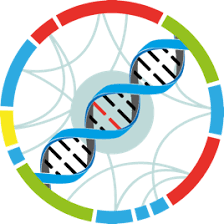Study : Genome biogeography reveals the intraspecific spread of adaptive mutations for a complex trait
Identification
Name
Genome biogeography reveals the intraspecific spread of adaptive mutations for a complex trait
Identifier
dXJuOkVWQS9zdHVkeS9QUkpOQTMzOTI0MA==
Description
Physiological novelties are generally studied on macro-evolutionary scales, and their micro-evolutionary origins remain poorly understood. Here, we test the hypothesis that key elements for a complex trait can evolve in isolation and later be combined by gene flow. We use C4 photosynthesis as a study system, which is a derived physiology that increases productivity in warm and dry conditions. The grass Alloteropsis semialata includes C4 and non-C4 genotypes, as well as intermediate phenotypes. In addition, some populations use laterally acquired C4-adaptive loci, creating an outstanding system to track the spread of novel adaptive mutations. Using genome data of C4 and non-C4 A. semialata individuals spanning the species range, we infer the past migrations of different parts of the genome. Our results show that photosynthetic types have diverged in isolated populations, where key C4 components were acquired. However, rare but recurrent gene flow allowed the spread of adaptive loci across genetic pools, as illustrated by laterally acquired genes for key C4 functions that were rapidly passed between populations belonging to distinct genetic pools. This first intraspecific study of C4-related genomic variation indicates that components of adaptive traits can evolve separately and later be combined through secondary gene flow, leading to the assembly and optimization of major evolutionary innovations.
Genotype
| Accession number | Name | Taxon |
|---|
